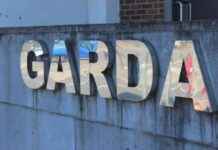Wild Deer Culling: A Record 78,000 Culled in 12-Month Period
In a recent report released by the National Parks and Wildlife Service (NPWS) to the Irish Deer Commission, it was revealed that a record-breaking 78,175 wild deer were culled in the 12-month period ending on February 28, 2023. This staggering number does not even include deer that were killed through road collisions or illegal poaching. The previous record for the number of deer culled in a 12-month period stood at 55,008 in 2022.
The Irish Deer Commission has suggested that the increase in deer licenses issued over the past decade may have contributed to the rise in culling numbers. In 2023, a total of 6,486 hunting licenses were issued, marking a 45% increase from previous years. All hunters are required to declare the number of deer they have culled by county, sex, and species to the NPWS annually.
The data from the culling activities revealed that 71% of the culled deer came from seven specific counties in Ireland, namely Wicklow, Cork, Waterford, Tipperary, Kerry, Galway, and Clare. Among these, Wicklow recorded the highest number of culled deer at 25,727, followed by Tipperary with 8,278. Wicklow is believed to have the largest deer population in Ireland, estimated at around 100,000 animals, although there is no official data on the total number of deer in the country.
The deer hunting season in Ireland had traditionally run from September 1 to December 31 for males and from November 1 to February 28 for females. However, earlier this year, the open season was extended to allow for an additional month of hunting for female and young deer, as well as an extra three months for male deer. This move was met with criticism from the Irish Deer Commission and the Irish Deer Society, who argued that it may lead to an increase in stag hunting without effectively reducing the overall deer population.
In the 12-month period ending on February 28, 2023, 56% of the culled deer were female. This marked a decrease from previous years, where around 60% of the culled deer were female. The shift in gender distribution is expected to continue due to the extended hunting season for male deer.
Deer in Ireland have protected status under the wildlife acts, but their populations in certain counties have been recognized as exceeding sustainable levels. Kieran Flood, the Coordinator of the Irish Wildlife Trust, acknowledged the need for deer management despite the organization’s preference for preserving wildlife. He emphasized the negative impacts deer can have on habitats in Ireland, particularly in woodlands, where they prevent regeneration by consuming or trampling new growth.
The lack of natural predators for deer in Ireland has led to a surge in their population, causing damage to natural habitats and ecosystems. Mr. Flood highlighted the need for more nature conservation measures beyond culling deer to address the imbalance in the ecosystem. Ireland’s wildlife organizations are faced with the challenge of managing deer populations to protect the environment while ensuring the conservation of these animals.
Subheadings:
The Impact of Increased Deer Culling
Challenges in Deer Population Management
The Role of Conservation Measures in Addressing the Issue
As Ireland grapples with the growing deer population and its impact on the environment, stakeholders are exploring various strategies to manage these animals effectively. The record-breaking culling numbers underscore the need for proactive measures to strike a balance between wildlife conservation and habitat preservation in the country.












